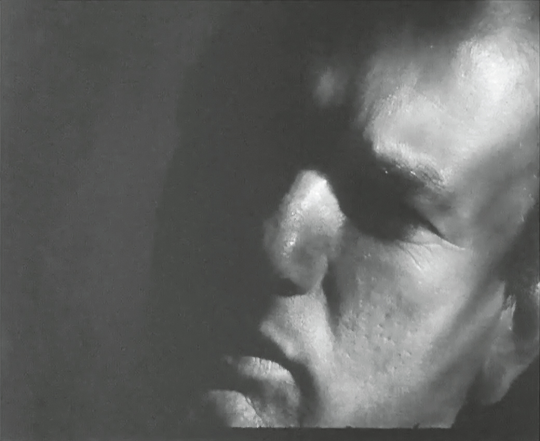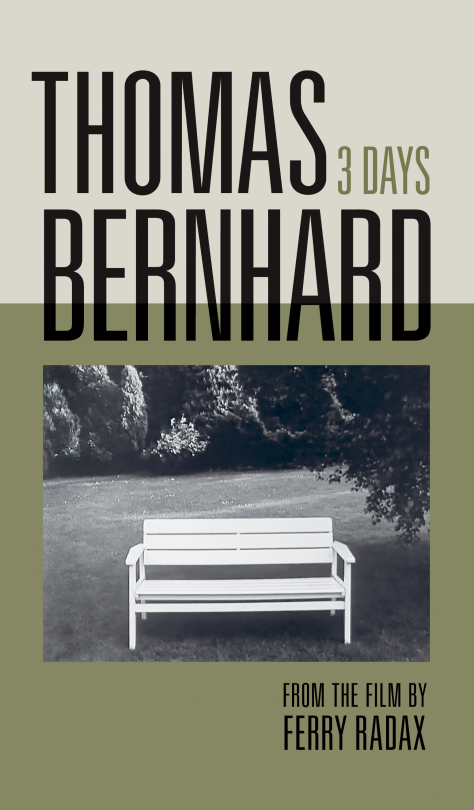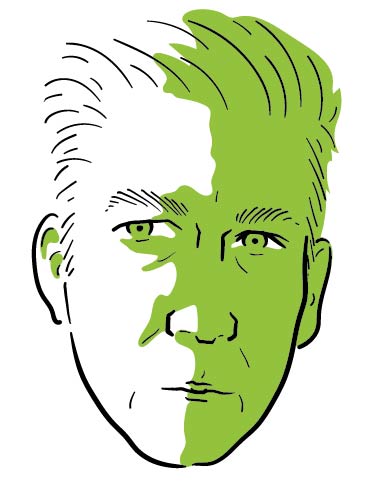
Jim Knipfel talks to Blast Books’ Laura Lindgren about the publication of Thomas Bernhard: Three Days.
Novelist William Gaddis once said that writers should be read and not heard. For the most part I would agree, but there are rare exceptions—Henry Miller and William Burroughs, say—writers whose voices and personas and free-flowing ideas remain as vital and significant as their published work. Thomas Bernhard fits neatly into that extremely limited category.
Along with Günter Grass, Bernhard remains one of the most monumental figures of postwar German literature. Beginning with On the Mountain in 1959, he published nearly forty novels, plays, and poetry collections before his death in 1989.
In novels like Gargoyles, The Lime Works and Concrete, employing a language at once rich and spare, Bernhard painted unrelentingly bleak and nihilistic portraits of isolation, frustration, and melancholia marked, as in Beckett and Gaddis, by both gallows humor and an intense aversion to traditional storytelling structures. Bernhard was an Austrian who, in Heldenplatz, referred to his home country as a land of “six and a half million retards and maniacs,” and a writer who became a writer only after finding art, music and business too easy. Writing was difficult, it was the only thing that offered any resistance, so that’s the path he followed. As filmmaker Errol Morris puts it, “He wrote in such a way as to undermine the process of writing. The writer with an underlying hatred of writing, as if each word was a stain on the page.”
After some difficult negotiations, in June of 1970 (the same year The Lime Works was published) experimental filmmaker and documentarian Ferry Radax and a small crew followed Bernhard to a park just outside Hamburg. Bernhard was thirty-nine at the time and already well-established as Austria’s greatest living writer. He took a seat on a park bench and, over the course of the next three days, talked about whatever came to mind.
Occasionally prompted by key words provided by Radax, Bernhard’s wide-ranging extemporaneous monologue touches on everything from his childhood, (“I remember still, from that very first school day, a pale boy laid out in the mortuary, a cheesemaker’s son…”) to his work, (“In essence, isn’t such a book nothing but a malignant ulcer, a cancerous tumor?”), to aging, to the inescapably existential human condition.
Radax took the footage and edited it into Three Days (Drei Tage), a fifty-five minute feature for German television. Far more than simply a monologue, Radax’s film was marked by prolonged silences, abrupt blackouts, and cutaways to trees, birds, and shots of the crew setting up. Subtly over the course of the film, the camera draws closer and closer to its subject, ending on a tight close-up. Weaving through it all is Bernhard’s precise and measured voice, at turns irritated, uncomfortable, even occasionally wistful and funny. It’s a deceptively simple and brilliant film, and Bernhard’s monologue, as dark and hopeless as much of it is, is enthralling.

Some forty years after it was made, and over twenty years after Bernhard’s death, Blast Books co-founder and publisher Laura Lindgren caught a screening of Drei Tage at New York’s Anthology Film Archive.
“I could hardly stand up from my chair when the end credits rolled,” Lindgren says. “I instantly thought I need this as a book to read anytime I want to sit down and read it. Everything he says makes absolute sense to me. Some people find it depressing—I don’t. His concluding thought is one of the most perfect expressions of a perfect idea I have seen.”
Lindgren, who had also been an instrumental force as managing editor, designer and typesetter of the 2006 centenary corrected edition of Samuel Beckett’s complete works, first became aware of Bernhard through William Gaddis.
“Joseph Tabbi’s terrific afterword to Agapé Agape, Gaddis’s final book, published in 2002, identified Gaddis’s affinity with Bernhard. Gaddis—like Bernhard recognized with awards and yet obscure to most readers—wrote of Bernhard’s book Concrete: ‘he’s plagiarized my work right here in front of me before I’ve even written it!’ So I started with Concrete and couldn’t stop—The Loser, Gargoyles (which is titled Verstörung in German, which means ‘Deranged’), Amras, Gathering Evidence, My Prizes. There’s a distinct kinship between Bernhard, Beckett, and Gaddis: among other things, the pursuit of truth, in all its terrible absurdity.”
Having decided she wanted to turn Three Days into a book forty-five years after it was first broadcast, the question became how to go about it.
“First I contacted Ferry Radax’s son, Felix, to propose the book, and originally thought I would use the English subtitles from the DVD issued in 2010. However, film subtitles, written for instantaneous, quick comprehension are not best suited for book publication. Felix told me of the German paperback.”
Unbeknownst to Lindgren at the time of the Anthology screening, German publisher Residenz Verlag had already published the text of Drei Tage as a slim volume, though with no stills and minus the film’s prologue. The German edition, which contained a post-production note by Bernhard about the film, was titled Der Italiener (The Italian), after a short story Bernhard revised to be shot by Radax after completing Three Days.
“So I bought a copy and translated the text, adding the prologue from the film,” Lindgren says. As an afterword, she also translated and revised an essay by Austrian film historian George Vogt, which had originally accompanied the DVD release. “Radax sent me a high-quality German DVD, and I pulled images from the film and designed a sample layout with my translated text. With the sample, Radax and Residenz Verlag could see precisely what I had in mind when I proposed to publish a book of the film in Bernhard and Radax’s honor. The head of foreign rights at Residenz in turn sent my sample layout to Bernhard’s brother, Dr. Peter Fabjan, executor of Bernhard’s estate, for approval. We all came to immediate contractual agreement.
“By the way,” she adds, “I was curious about the book Bernhard has alongside him on the bench in part of the film and looks into now and again. Georg Vogt knew. As a means of triggering thoughts for Bernhard’s extemporaneous monologue, Radax had prepared a book with quotes from Bernhard’s works thematically arranged. From Radax’s archive, Georg supplied images of four pages from the book, which I included with my translations as the book’s appendix.”

The translation was central, though not necessarily an easy thing when it comes to someone like Bernhard, a writer who—like Gaddis—had a reputation for being a bit of a stickler over the tiniest details.
“Bernhard certainly was a stickler about the publication of his work,” Lindgren admits. “Radax, too, knew of Bernhard’s ability to sustain an argument over a comma… Bernhard basically considered translations to be not his work, but other books in themselves. Of course loss is translation’s unshakable companion, but what else have we got if we can’t read in multiple languages? Bernhard’s works have been translated into English by a variety of translators, and scholars have discussed their successes or shortcomings in getting Bernhard across in English. Bernhard had facility with the imaginative compounding of German words (Wirklichkeitsverachtungsmagister, Menschenwillenverschweiger), but with Three Days, the text is quite conversational. My aim was to keep it feeling natural to the situation of Bernhard sitting on the bench and talking.”
Published by Blast Books in November, the compact finished volume, also designed by Lindgren, is a gorgeous thing which, like Bernhard’s prose, is at once rich and spare. Beyond being a mere movie tie-in, the book is a work of art in itself, which both accentuates and expands the themes and style of Radax’s film. Combining dozens of stills, assorted shades of gray and black, supplementary materials and a text laid out in such a way as to leave the monologue reading at times like a collection of existentialist aphorisms and at others like a prose poem, Lindgren has meticulously crafted a singular and invaluable addition to Bernhard’s English bibliography.
“My model for the book layout was the film itself,” she says. “I designed Three Days in synch with Ferry Radax’s vision, in particular his ideas about observing—at times intensely scrutinizing, at times extremely distant from—his uncomfortable and yet astoundingly open subject. With some 160 film frames, the pace of the book reflects the pace of the film. Image and word combine to form a visual-verbal poetic prose. The book is intended as an extension of the collaboration between Bernhard and Radax, a way to slow Three Days down yet further to the stillness of a book, the silent conveyance of ideas and images to the reader.”

It is interesting to consider from this vantage point what Bernhard, a man who (to put it mildly) could be a bit prickly, a man who bought and polished his own tombstone in the months shortly before his death, would have thought about both the film and the book.
“As Bernhard says in the film, ‘To make oneself understood is impossible; it cannot be done.’ No question about that,” Lindgren says. “But Three Days is a powerful attempt to break through the impossible–the film itself is a prime example of Bernhard’s ideas about confronting that which one resists, doing that which one wants nothing to do with.
Ferry Radax has spoken and written about Bernhard’s reaction to the film. When Radax first showed him the finished work, Bernhard, of course wary, was seated in an adjacent room. From his vantage point, Radax could see only Bernhard’s crossed legs and feet. Radax says from the mere swing of Bernhard’s foot, he could see that Bernhard’s anxiousness dissolved into satisfaction with the result. Radax is very happy with the book, and Bernhard’s brother has told me Thomas would be content with it. I can imagine the easy swing of his foot.”





